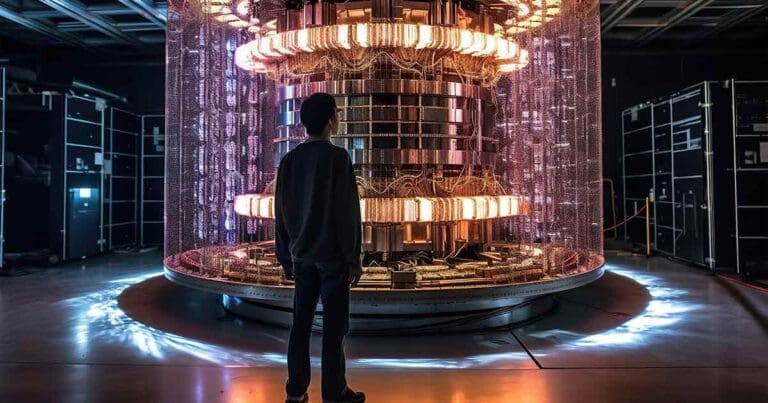Innovations in Human-Machine Interaction and Its Impact on Tech Jobs

In a world where technology reigns supreme, the lines between humans and machines are becoming increasingly blurred.
The dawn of Human-Machine Interaction (HMI) innovations has not only revolutionized the way we interact with our devices but it has also paved the way for exciting new opportunities in the realm of technology.
From virtual reality to artificial intelligence, these profound developments have given rise to a host of cutting-edge jobs and roles that are shaping the future of our digital landscape.
Delve into the realm of HMI innovations, explore what they are, their intended purpose, and the transformative impact they have on technology and the job market.
HMI meaning and importance
Human-Machine Interaction (HMI) is a multidisciplinary field focusing on the interface between people and technology. It explores how human users can interact and communicate with machines in an efficient and user-friendly manner.
The significance of HMI innovations lies in their potential to drastically enhance the user experience and streamline operations to boost productivity across multiple industries.
As the HMI technology landscape evolves, there has been an upsurge in advanced systems and interfaces such as augmented reality, voice recognition, and gesture-based controls, changing the way we interact with technology.
These advancements are not only pushing the boundaries of human-machine interfaces but also shaping the future job market, creating new roles and opportunities for tech professionals.
Key HMI innovations
Key HMIM innovations include voice and speech recognition, gesture controls, augumented reality (AR), and virtual reality (VR).
Voice and speech recognition
One of the most notable HMI innovations is voice and speech recognition technology.
This groundbreaking development enables machines to understand and respond to human speech, making it easier for us to interact with devices without using our hands.
From virtual assistants like Siri and Alexa to smart homes and cars, this technology has become increasingly prevalent in our daily lives.
Gesture controls
With the rise of augmented reality (AR) and virtual reality (VR), gesture control is another crucial HMI innovation that has taken the tech world by storm.
This technology allows us to interact with digital content using hand gestures, making the experience more immersive and intuitive.
Gesture controls have a wide range of applications, from gaming and entertainment to healthcare and education.
Augmented Reality (AR) and Virtual Reality (VR)
AR and VR are two HMI innovations that have revolutionized the way we interact with technology.
Augmented reality adds digital elements to our real-world environment, while virtual reality creates a completely immersive experience.
Both AR and VR have immense potential in industries such as gaming, marketing, education, and healthcare.
Impact of HMI innovations on everyday lives
The impact of HMI innovations on everyday lives include enhanced accessibility, improved efficiency and productivity, enriched entertainment experiences, and creation of new job opportunities.
HMI enhances accessibility
HMI innovations have played a pivotal role in making technology more accessible to people with disabilities.
Voice and speech recognition, as well as gesture controls, have enabled individuals with limited mobility or visual impairments to interact with devices effortlessly.
AR and VR have also opened up new possibilities for individuals with physical limitations by providing immersive experiences that were previously out of reach.
HMI improves efficiency and productivity
HMI innovations have also contributed to improving efficiency and productivity in various industries.
Voice and speech recognition technology, for instance, has made it easier to perform tasks hands-free, reducing the time and effort required.
In manufacturing settings, gesture controls have streamlined operations and increased productivity by allowing workers to interact with machines more seamlessly.
HMI enriches entertainment experiences
The impact of HMI innovations is not just limited to work-related tasks; they have also enhanced our entertainment experiences.
AR and VR technologies, in particular, have transformed how we consume media and interact with entertainment content.
From virtual concerts and events to interactive gaming experiences, these innovations have taken entertainment to a whole new level.
HMI creates new job opportunities
As HMI technology continues to evolve and become more widespread, it has created a demand for skilled professionals with expertise in this field.
Roles such as HMI designers, developers, and engineers are now in high demand as companies look to implement these innovations into their products and services.
The rise of HMI has also opened up opportunities for cross-disciplinary roles that blend technology with fields like psychology, design, and human-computer interaction.
Job opportunities created by HMI innovations
Job opportunities created by HMI innovations include HMI designers and engineers, data scientists, user experience (UX) designers, artificial intelligence (AI) specialists, AR/VR developers, and accessibility consultants.
HMI designers and engineers
HMI designers and engineers are responsible for creating user-friendly interfaces that allow humans to interact with machines easily.
They use a combination of technical skills, design principles, and user research to develop HMI solutions that enhance the user experience.
Data scientists
With the influx of data collected through HMI technologies, the role of data scientists has become increasingly important.
These professionals analyze and interpret data from human-machine interactions to identify patterns and insights that can improve the performance of HMI systems.
User experience (UX) designers
User experience designers have a critical role in ensuring that HMI interfaces are intuitive, engaging, and user-friendly.
They conduct user research, create wireframes and prototypes, and collaborate with HMI designers to develop interfaces that meet user needs and preferences.
Artificial Intelligence (AI) specialists
As HMI technologies become more advanced, the need for artificial intelligence specialists has also increased.
These professionals develop algorithms and models that enable machines to understand and respond to human inputs, making interactions more natural and seamless.
AR/VR developers
The demand for AR/VR developers has skyrocketed with the rise of these technologies in various industries.
These professionals use their knowledge of programming, 3D modeling, and animation to create immersive experiences that blur the lines between reality and digital content.
Accessibility consultants
With the focus on creating more inclusive HMI solutions, there is a growing need for accessibility consultants who can ensure that these technologies are accessible to people with disabilities.
These professionals provide guidance and advice on how to design and develop interfaces that cater to a diverse range of users.
The Future of HMI Innovations
As we reflect on the revolutionary advancements in Human-Machine Interface (HMI) innovations, it is clear that the evolution of HMI technologies has been synchronized with the creation of a plethora of new job opportunities.
The surge in the influence of HMI in our daily lives and industries has simultaneously nurtured a vast ecosystem of professional roles.
From HMI designers and engineers to AI specialists, the growth of these innovations is intrinsically linked with the emergence and expansion of these roles.
This symbiosis makes it evident how advancements in technology not only shape our interactions with machines but also transform the professional landscape, creating a ripple effect that influences myriad aspects of society.
Looking to hire top-tier Tech, Digital Marketing, or Creative Talent? We can help.
Every year, Mondo helps to fill over 2,000 open positions nationwide.
More articles about hiring and industry trends:
- New Workers’ Rights Legislation: What Employers Need to Know
- The Agricultural Revolution and the Role of AI
- Burnout vs. Stress in the Workplace: How to Identify & Prevent
- How to Lead High-Performing Teams Without Overworking Them
- Ultimate Year-End Management Checklist for Leaders to Ring in The New Year
- Generative AI & Its Impact on the Job Market: It’s Not All Bad News
- Understanding GenAI and Maximizing Its Potential in Business
- The Future of Recruiting: Top 10 Challenges in Tech and Digital Hiring
- How To Conquer the Top 10 Most Common Recruitment Challenges
- The Rise of Working Moms & the Role of Remote Work
- How to Recruit Top Data Scientists in a Competitive Job Market
- Lessons From Unicorn Companies: Hiring Strategies for Rapid Growth



